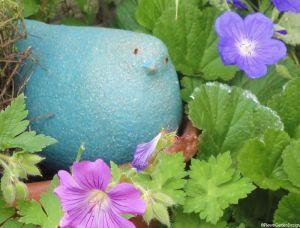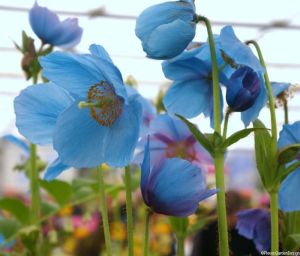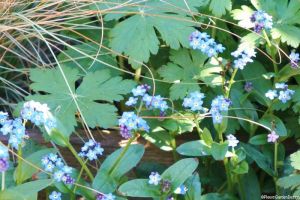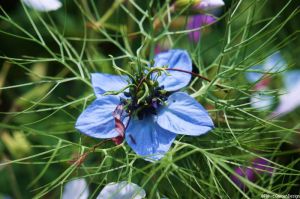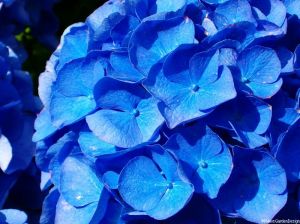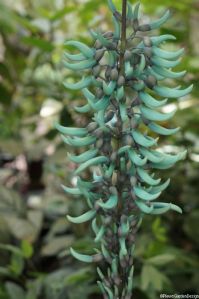“How do you find the inspiration to design gardens?” is a question I’m often asked. So I thought I’d share one of the ways in which this particular garden designer finds her inspiration to create a practical paradise in your ‘back yard’.
A few days away in a different part of the country where ‘things to do’ did not specifically include gardens to visit offered an opportunity to enjoy some different pleasures, including local food and attractions. However, habits are not easy to break, and I still found myself awake early and needing to go out for a run, dog or no dog! The weather was lovely and a walk / run through a local nature reserve was hardly a hardship. On the contrary I had the (for me) rare delight of seeing a Kingfisher; that flash of cyan blue is unmistakable.
These birds are such a stunning shade of turquoise, that later, whilst I was sipping my morning espresso, it made me think; turquoise is not a colour we often find in our garden flowers. It is one of my favourite colours (along with purple) and I began to ponder on whether it would be possible to have a ‘turquoise garden’ along the lines of the ‘white garden’ at Sissinghurst.
So which flowers could grow in a turquoise garden? Of course I thought of the Himalayan blue poppy, Meconopsis betonicifolia; Meconopsis ‘lingholm blue’ has petals of a particularly good shade of turquoise that retain their brightness. Readers of earlier blogs may recollect I extolled the delights of Meconopsis in Scottish gardens last year and at RHS Chelsea Flower Show this May. Personally, I have not been successful in growing Himalayan poppies; or rather I’ve managed to grow them but not to retain them for subsequent years. They are slightly tricky to establish needing cool damp conditions and an acidic soil; it is the cool damp that I have a problem with but I shall be trying again (although not when we’re promised a long hot summer!)
Around the feet of the poppies I would grow Forget-me-nots or Myosotis sylvatica. These delightful self-seeding annuals are easy maintenance gardening; let a few of them set seed and you have a guaranteed floral carpet the following spring. The petal colours are generally a turquoise blue, but pale blue, white and even pale pink variations are all possible.
Another annual flower that self seeds so offers low maintenance gardening is Nigella damascena or Love-in-a-mist. Like the Forget -me-not, there is some variation in the flower colour, especially after a few years, when there seems to be a higher incidence of whites and pale blues amongst the turquoise. This dilution of our chosen jewel colour once a bit of interbreeding occurs can be avoided by preventing the flowers from dispersing their seed. Nigella damascena ‘Miss Jekyll’ has petals that are sky blue but I have in the past found a few rogues in subsequent years to be a cyan tinged sky blue.
So far we’ve had turquoise flowers in our turquoise garden from April through to July, but the fine weather isn’t over and neither are the turquoise flowers for your garden. We can extend the season with a Hydrangea. There are plenty of blue hydrangeas and some of these do tend towards a turquoise hue. I particularly like Hydrangea macrophylla ‘brestenburg’, one of the mop head Hydrangeas. Those close packed domes of flowers pack a colourful punch at the end of the summer. Holehird Gardens in Cumbria hold one of the National Collections of Hydrangeas.
Like the Himalayan poppies we began with, to get the best turquoise blue hydrangea you need an acid garden soil. But also like the poppies it is possible to grow hydrangeas in a raised bed or (large) pot if your soil is not right. Both the Forget-me-nots and the Love-in-a-mist are easy to give the right soil to as they’re fairly tolerant; to the extent of seeding themselves in the cracks between paving stones. Seedlings in the wrong place are easily lifted and thrown onto the compost heap.
So a turquoise flowering spring and summer garden is possible. As for what other flowers and foliage would complement or contrast the turquoise – well, why not drop us an email and ask about our planting design service?
I couldn’t finish this blog about turquoise flowers without mentioning the (not quite turquoise) Jade Vine (Strongylodon macrobotrys). This tropical beauty, seen here in the RHS Wisley glasshouse where it has produced a record number of hanging flower trusses this year. This climbing Philippine native produces flowers of a stunning aquamarine colour; you can see it at Wisley, Kew and in the botanic gardens of Oxford and Cambridge Universities; it flowers from April – July.
Marie Shallcross, Senior Partner, Plews Garden Design
Resolving your Gardening issues with inspirational ideas and flexible solutions
